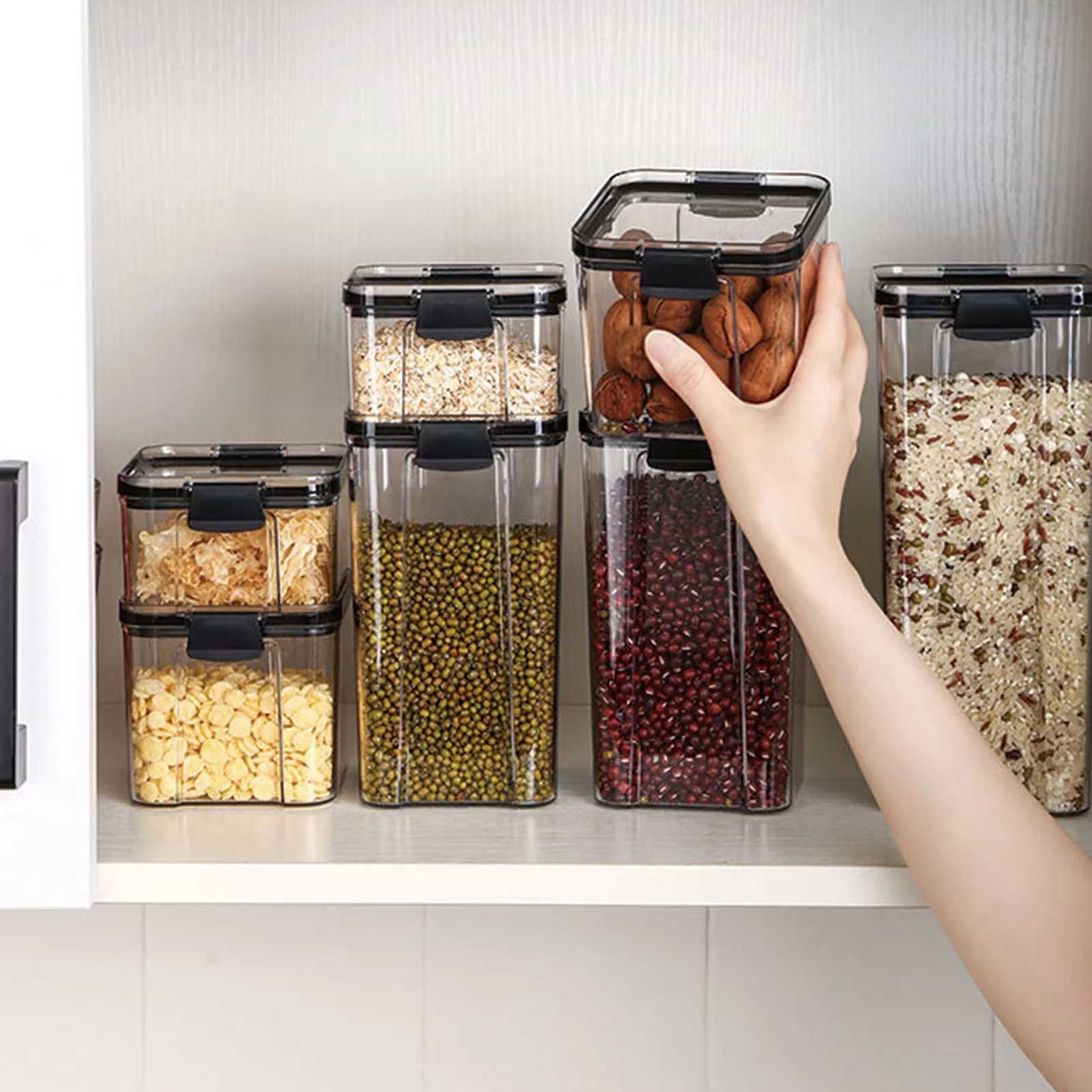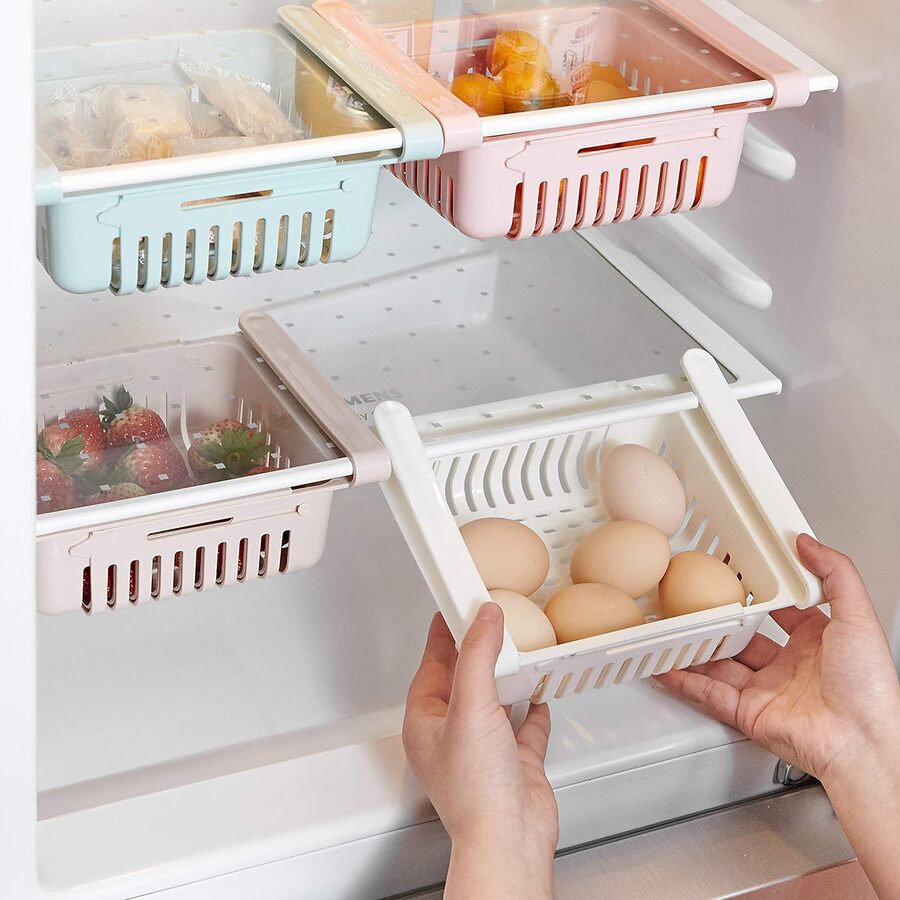
You know it’s bad when opening your freezer feels like prepping for a marathon. After digging your way through goodness-knows-what every time you grace its door (for far longer than you care to admit), you have decided it is time for change. It’s time to make your life easier – and we are absolutely all for it.
Whether you know what the core of your freezer mayhem is or if the sense of chaos continues to elude you, there are many places where you can start to bring further organization into your freezer space.
To help you begin, we asked professional organizers to share their expert-approved freezer organization tips, ranging from absolute decluttering lifesavers to definite ‘don’ts’. Get ready for easier mealtimes, improved navigation, and an abundance of extra drawer space.
1. Take everything out

Emptying out your chock-o-block freezer may seem like an unnecessary cumbersome task, but starting from scratch is the best way to ensure that you know what space you’re dealing with.
‘Before you begin organizing the freezer, you need to take everything out, because if you don’t you are going to put things where they fit, not where they belong,’ says Ben Soreff, professional organizer at House to Home Organizing.
While you’re at it with an empty freezer space, this is the ideal time to give the area a clean. Many people forget that their freezer's interior – not just its drawers – can benefit from a good wipe down from time to time, as frozen food tends to leave little mess aside from the odd bag spillage or surplus ice.
Di Ter Avest, professional organizer and founder of Di is Organized, offers two main methods which, in combination, will leave your freezer both looking fresh and smelling amazing.
‘I like to clean the freezer walls with warm water and vinegar and wash the shelves and drawers with soap and warm water,’ says Di. ‘You can also rub a bit of vanilla extract with a paper towel on the walls of the freezer. The scent only lasts for a couple of days but it’s totally worth it in my opinion – you won’t believe the aroma it will create, plus it doesn’t stain!’
Di recommends lightly cleaning your drawers or shelves to coincide with your weekly grocery shop and deep cleaning the freezer twice a year.
2. Sift through your frozen food

Now your freezer is all empty and clean, it’s time to go through what was clogging it up in the first place. It can be harder to declutter frozen food items in comparison to fresh ones as it isn’t as simple as looking for a since-passed expiration date.
So where to begin? Discard any freezer-burned meat or items you know have been in the freezer for far too long. By now, according to Ben, they will have fallen into the ‘“they have been in there so long, I don’t want to be the one who takes it out” trap’.
This trap is particularly easy to fall into if you’re prone to storing food in aluminum foil or other opaque packaging with no labeling. Not only does it leave you unaware of what is inside of your freezer, but it will additionally provide you with no indication of when you froze your goods.
‘Food is meant to be eaten, we aren’t keeping it in the freezer as a science experiment,’ says Ben. ‘Storing items in clear glass with proper labels is best, assuming this is the main freezer and not a true back up freezer.’
3. Implement a category system

Haphazardly throwing everything into your freezer drawers as quickly as possible isn’t the most efficient way to put your things away. If you do this you will end up not knowing what is where, struggling to keep track of what you need to buy more of, and having foods such as meats next to frozen vegetables.
Amanda Wiss, founder of NYC-based home organizing company Urban Clarity and home staging company Urban Staging, believes that a category system is an absolute must when it comes to freezing food.
‘Freezer organization is key, and I achieve this by zoning my freezer space,’ says Amanda. ‘Whether you have shelves or drawers, you’re going to want to designate specific spaces within them. I generally separate things into: frozen produce, frozen meats and meals, and frozen leftovers. Then, I have a zone for extras, such as frozen butter, and a specific place for ice trays.
Amanda recommends keeping the likes of ice trays and smoothie-making supplies – some common-use items – in an easy to grab spot to avoid frequent freezer-digging.
The importance of categorizing a freezer’s space is a sentiment that Di agrees with: ‘Create zones for meat, vegetables, fruits, desserts, breakfast items, etc. I also suggest storing veggies, fruits, and other items on top shelves or top drawers and meat on the bottom to avoid any potential contamination (e.g - blood drips) on other food.’
4. Be mindful that not all items are freezable!

As much as freezers are a great way to increase the longevity of your food, you can’t freeze everything. ‘There are many foods that should never go in the freezer, including coffee and eggs,’ says Ben. Your coffee beans will absorb the surplus moisture of your freezer and, similarly to why you should only store your carbonated drinks in the fridge, raw eggs may be inclined to explode if placed in your freezer space.
Do your best to keep your freezer tidy once you’ve taken these steps, and enjoy your new-and-improved easy-to-navigate space!







